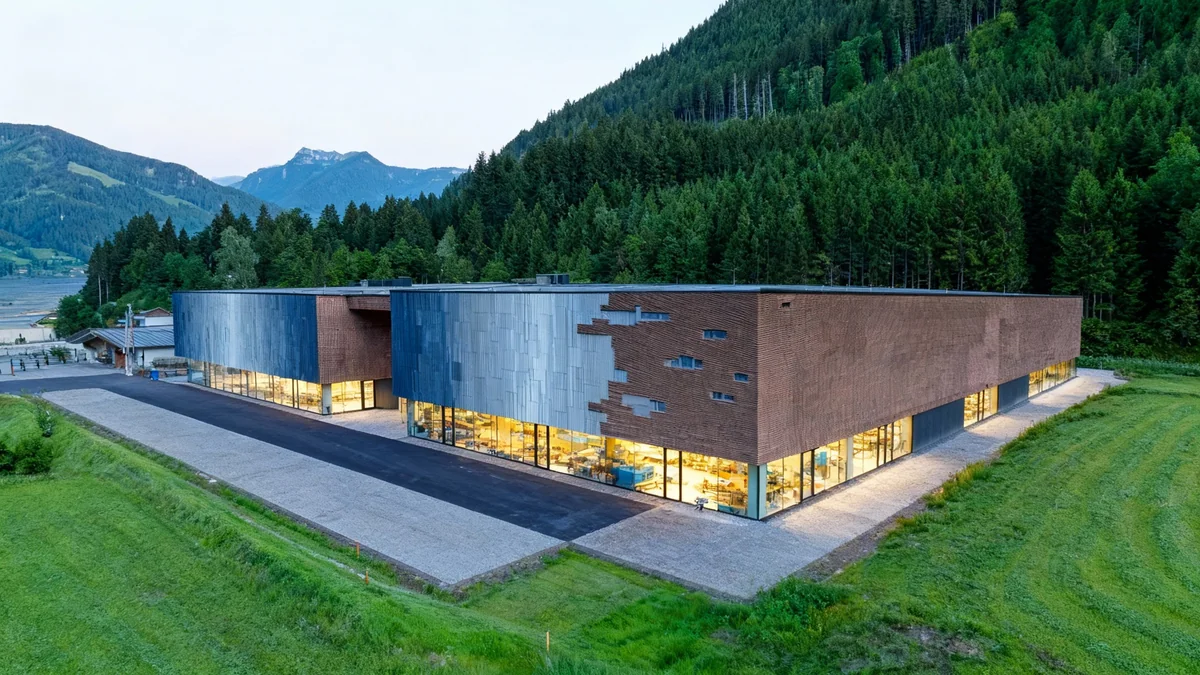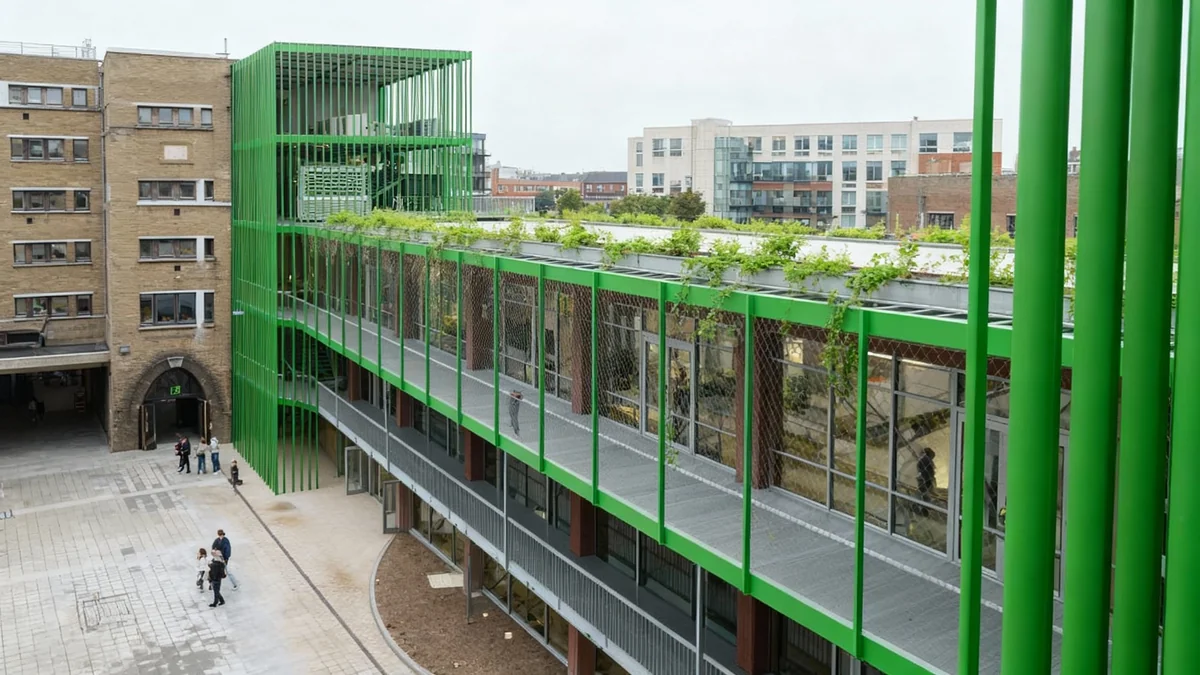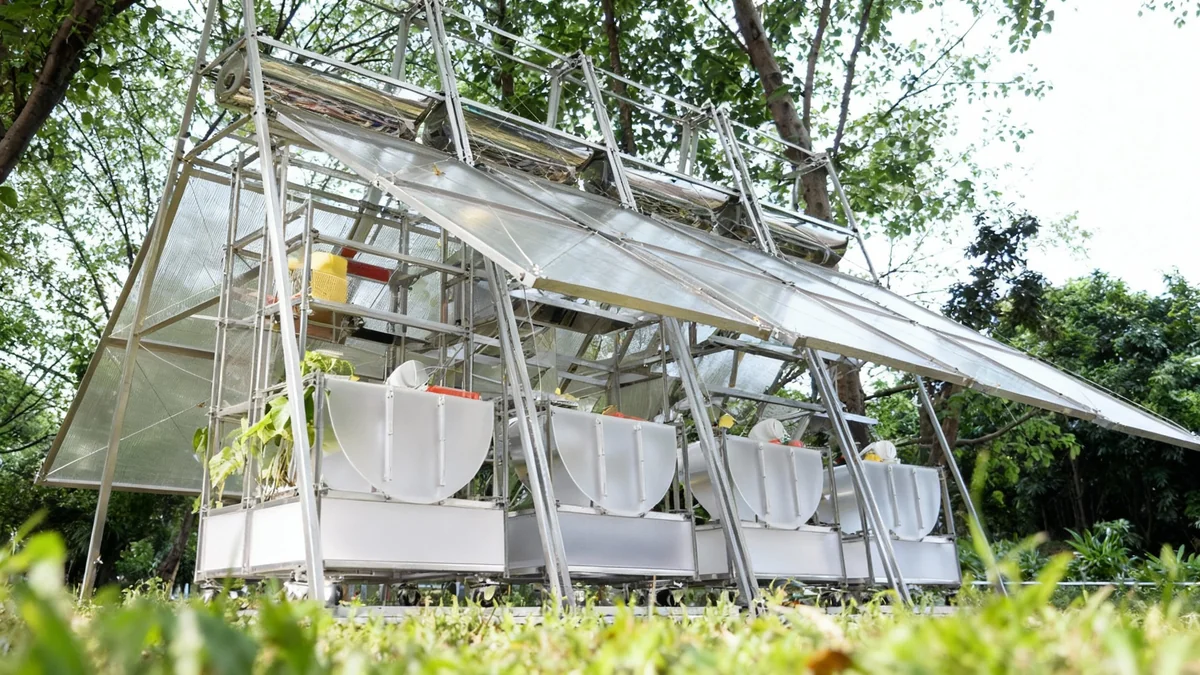Harvard University has opened a new social hub on its Allston campus, a striking two-story building named the Rubenstein Treehouse. Designed by the acclaimed architecture firm Studio Gang, the center features an exposed mass-timber structure with columns that branch out like a tree, creating a distinct and memorable architectural identity.
The 55,000-square-foot facility serves as a central gathering place for students and faculty at the university's Enterprise Research Campus. Its design emphasizes sustainable practices and a direct connection to nature, both visually and through its material choices.
Key Takeaways
- Harvard University has opened the Rubenstein Treehouse, a new student center designed by Studio Gang.
- The building's signature feature is an exposed mass-timber structure with columns that branch outward like trees.
- The 55,000-square-foot facility is located on the Allston Enterprise Research Campus and prioritizes sustainability.
- It uses a low-carbon concrete core, is fully electric, and incorporates rainwater harvesting systems.
A Structure Inspired by Nature
The Rubenstein Treehouse immediately stands out due to its unique structural design. The building's visual identity is defined by its use of mass timber, an engineered wood product known for its strength and lower carbon footprint compared to traditional steel and concrete.
On the exterior, large timber columns are canted at an angle, branching upwards and outwards to support the overhanging upper floor. This design choice is not merely aesthetic; it directly mimics the form of a tree, reinforcing the building's name and its connection to the natural world.
The facade is clad in wood and strategically faceted, giving the building a dynamic appearance that changes with the light. The large glass windows are made with bird-friendly materials and are shaped to align with the structure's angular geometry.
Inside the 'Treehouse'
The nature-inspired theme continues inside. Visitors enter through one of three entrances into a double-height lobby that opens into a soaring triple-height atrium. This central space is anchored by massive concrete cores, which are made from a low-carbon mix.
Overhead, the ceiling exposes the impressive glued-laminated (glulam) timber rafters, giving the interior a warm and organic feel. Elevated walkways cross above the lobby, and the same tree-like columns seen on the exterior are present inside, holding up the roof structure. Light filters down from skylights at the top of the atrium, illuminating all levels of the building.
What is Mass Timber?
Mass timber is a category of engineered wood products that includes cross-laminated timber (CLT) and glued-laminated timber (glulam). These products are made by binding layers of wood together to create large, strong structural components. It is often considered a more sustainable alternative to steel and concrete because wood is a renewable resource that sequesters carbon.
A Hub for Innovation and Collaboration
The Rubenstein Treehouse is designed to be more than just an architectural statement; it is a functional social hub for the campus. The ground floor contains a cafe and administrative areas, providing essential amenities for daily campus life. It also includes a large logistics area to service the event spaces on the upper floors.
The first floor is dedicated to collaboration, featuring numerous meeting rooms of various sizes situated around the building's perimeter. The second floor houses the largest meeting spaces, including the expansive Canopy Hall. An outdoor terrace runs along the south side of this top floor, offering fresh air and views of the surrounding campus.
"The Rubenstein Treehouse is a building that opens itself up, welcomes all people, and serves as a visual and programmatic anchor to the ERC," said Studio Gang founder Jeanne Gang. "Its exposed mass timber structure demonstrates Harvard's commitment to a more sustainable future."
The interior design details further enhance the building's theme. Textiles with forest-inspired patterns, such as carpeting that resembles camouflage, are used in some of the meeting rooms, subtly reinforcing the connection to nature.
Building by the Numbers
- Size: 55,000 square feet (5,109 square metres)
- Height: Two stories with a triple-height atrium
- Materials: Mass timber (glulam), low-carbon concrete, bird-friendly glass
- Key Space: Canopy Hall, the largest meeting area
Commitment to a Sustainable Future
Sustainability was a core principle in the design and construction of the Rubenstein Treehouse. The decision to use a mass-timber structure is a significant part of this commitment, as it reduces the building's embodied carbon.
The facility is entirely electric, minimizing its reliance on fossil fuels for operations. It is powered by a combination of grid electricity and on-site photovoltaics. A daylight harvesting system is also in place, which uses sensors to reduce the need for artificial lighting when natural light is sufficient.
The landscape, designed by the studio Scape, is also integrated into the building's environmental strategy. Lawns and bioswales surrounding the structure are designed to capture rainwater, which is then reused within the building. This approach not only conserves water but also helps manage stormwater runoff on the campus.
The Rubenstein Treehouse is a key part of Harvard's growing Allston campus, which will also feature buildings by other prominent architecture firms, including MVRDV and Henning Larsen. This new student center sets a high standard for sustainable design and serves as a physical representation of the university's focus on innovation and environmental responsibility.




